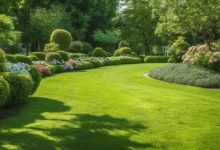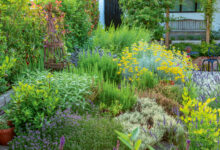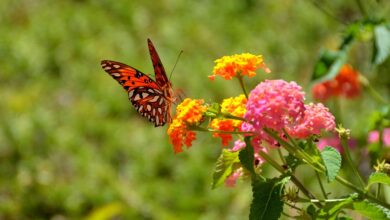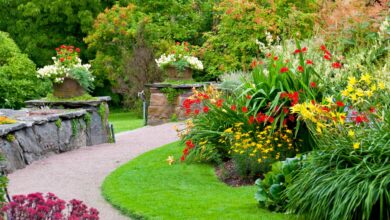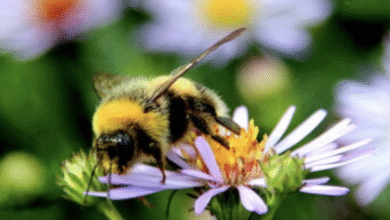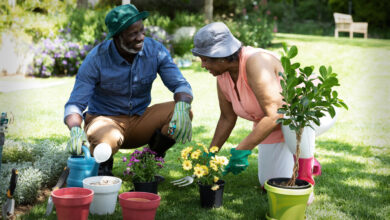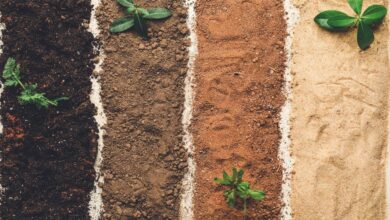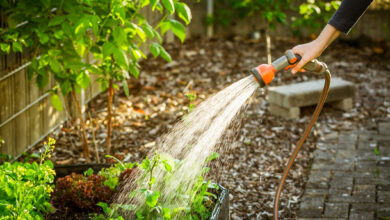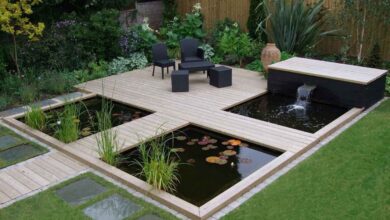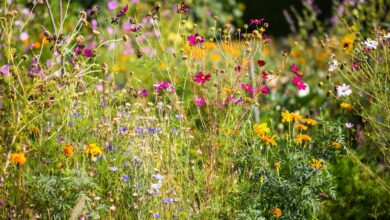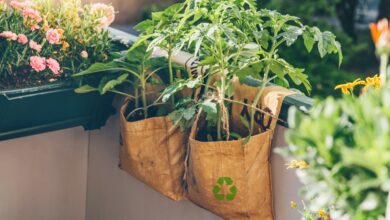Growing Strawberries in Hanging Baskets Complete Care Guide
Master growing strawberries in hanging baskets with expert tips on varieties, soil, watering, and care for abundant harvests in small spaces.
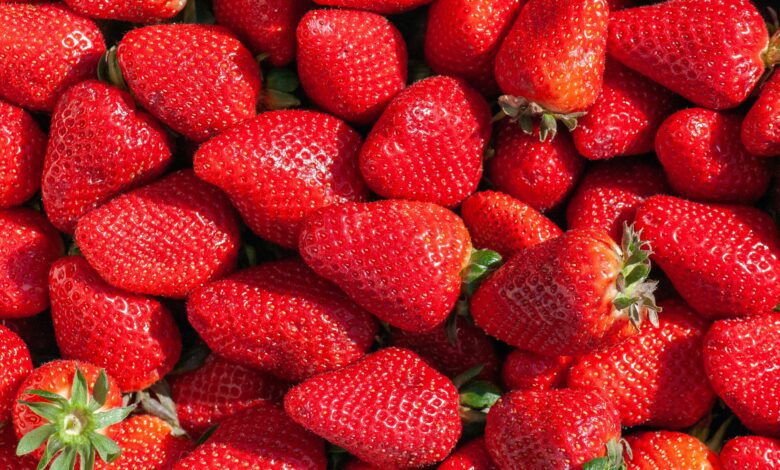
Imagine stepping onto your patio or balcony and plucking fresh, sun-ripened strawberries from elegant cascading plants suspended at eye level. This dream becomes reality when you start growing strawberries in hanging baskets—a space-saving innovation that transforms even the smallest outdoor areas into productive fruit gardens. Whether you’re an urban gardener with limited square footage or simply seeking an attractive alternative to traditional ground planting, hanging basket strawberries offer the perfect solution for cultivating this beloved summer fruit.
The beauty of strawberry hanging baskets extends far beyond their ornamental appeal. These suspended gardens provide practical advantages that ground-planted strawberries cannot match. By elevating your plants, you naturally protect them from soil-borne diseases, reduce pest infestations, and keep precious berries away from ground-dwelling creatures. The vertical growing method also improves air circulation around foliage, minimizing fungal problems that plague traditional strawberry patches during humid weather.
Container strawberries in hanging arrangements have revolutionized home fruit production for apartment dwellers, renters, and anyone without access to garden beds. You can position these portable gardens wherever sunlight is optimal, move them indoors during harsh weather, and arrange them at comfortable heights for effortless harvesting. The cascading growth habit of strawberry plants creates stunning visual displays, with white blossoms and bright red fruits spilling over basket edges like living floral arrangements.
This comprehensive guide reveals everything you need to know about growing strawberries in hanging baskets—from selecting the best strawberry varieties for containers to mastering watering techniques, fertilization schedules, and seasonal care. Whether you’re planting your first basket or seeking to improve existing yields, these expert strategies will help you achieve abundant harvests while maximizing your limited space. Get ready to discover how vertical strawberry gardening can transform your outdoor living area into a productive and beautiful edible landscape that provides fresh berries throughout the growing season.
Why Choose Hanging Baskets for Strawberries?
Growing strawberries in hanging baskets offers numerous advantages that make this cultivation method increasingly popular among home gardeners. These benefits help you appreciate why suspended containers often outperform traditional ground planting for strawberry production.
Space Efficiency and Accessibility
Hanging strawberry plants maximize vertical space, making them ideal for balconies, patios, and small yards. When ground space is limited or unavailable, suspended baskets utilize overhead areas that would otherwise remain unproductive. This vertical approach allows you to grow substantial quantities of fruit in surprisingly compact areas.
The elevated position also provides ergonomic benefits. Strawberries in hanging baskets eliminate the need for bending or kneeling during maintenance and harvest. You can position baskets at comfortable working heights, making tasks like watering, pruning, and berry picking significantly easier, especially for gardeners with mobility limitations.
Pest and Disease Prevention
Elevation naturally protects container strawberries from many common problems. Ground-dwelling pests such as slugs, snails, and various beetles cannot easily reach suspended plants. Soil-borne diseases that devastate traditional strawberry beds pose minimal threat to plants growing in sterile potting mix several feet above ground.
The improved air circulation around hanging basket strawberries significantly reduces fungal infections. Unlike ground-planted strawberries, where foliage often creates stagnant air pockets, suspended plants benefit from consistent airflow that keeps leaves dry and discourages mold development.
Cleaner Fruit and Easier Harvest
Berries suspended in baskets remain clean and unblemished throughout development. Unlike ground-grown strawberries that touch soil and require washing before consumption, hanging strawberries dangle freely, staying pristine until harvest. This cleanliness factor appeals to gardeners who value fresh eating without extensive preparation. The cascading growth habit also makes fruit more visible and accessible. Ripe berries announce themselves prominently against basket edges rather than hiding beneath foliage in garden beds.
Selecting the Best Strawberry Varieties for Hanging Baskets
Choosing appropriate strawberry varieties for containers proves crucial for successful basket cultivation. Not all strawberry types perform equally well in suspended environments, so varietal characteristics help ensure productive harvests.
Day-Neutral and Everbearing Varieties
Day-neutral strawberries represent the optimal choice for hanging basket growing. These varieties produce fruit continuously throughout the growing season, regardless of day length, providing steady harvests from late spring through fall. Their compact growth habit and reduced runner production make them ideal for confined spaces.
Popular day-neutral options include ‘Albion’ and ‘Seascape’—both renowned for flavorful berries and reliable production. These cultivars focus energy on fruit development rather than vegetative growth, maximizing yields in limited basket volumes.
Everbearing strawberries also work well for suspended cultivation. Varieties like ‘Quinault’ and ‘Ozark Beauty’ produce two main crops annually—one in early summer and another in fall—with occasional berries between flushes. Their manageable size suits basket constraints while providing substantial harvests.
Alpine Strawberry Options
Alpine strawberries (Fragaria vesca) offer unique advantages for hanging strawberry baskets. These compact plants produce small, intensely flavored berries continuously from early summer until frost. Unlike standard strawberries, alpines rarely generate runners, making them exceptionally low-maintenance in containers.
Cultivars such as ‘Mignonette’ and ‘Alexandria’ feature concentrated wild strawberry flavor in diminutive fruits. While individual berries measure smaller than conventional types, the consistent production and gourmet taste appeal to discerning gardeners.
Avoiding June-Bearing Varieties
June-bearing strawberries prove unsuitable for container growing in most situations. These varieties produce single, concentrated crops annually and generate abundant runners. The vigorous runner production becomes problematic in hanging baskets, where trailing stems have nowhere productive to root. Additionally, June-bearers require two growing seasons to reach full production, making them impractical for annual container cultivation.
Choosing the Right Hanging Basket
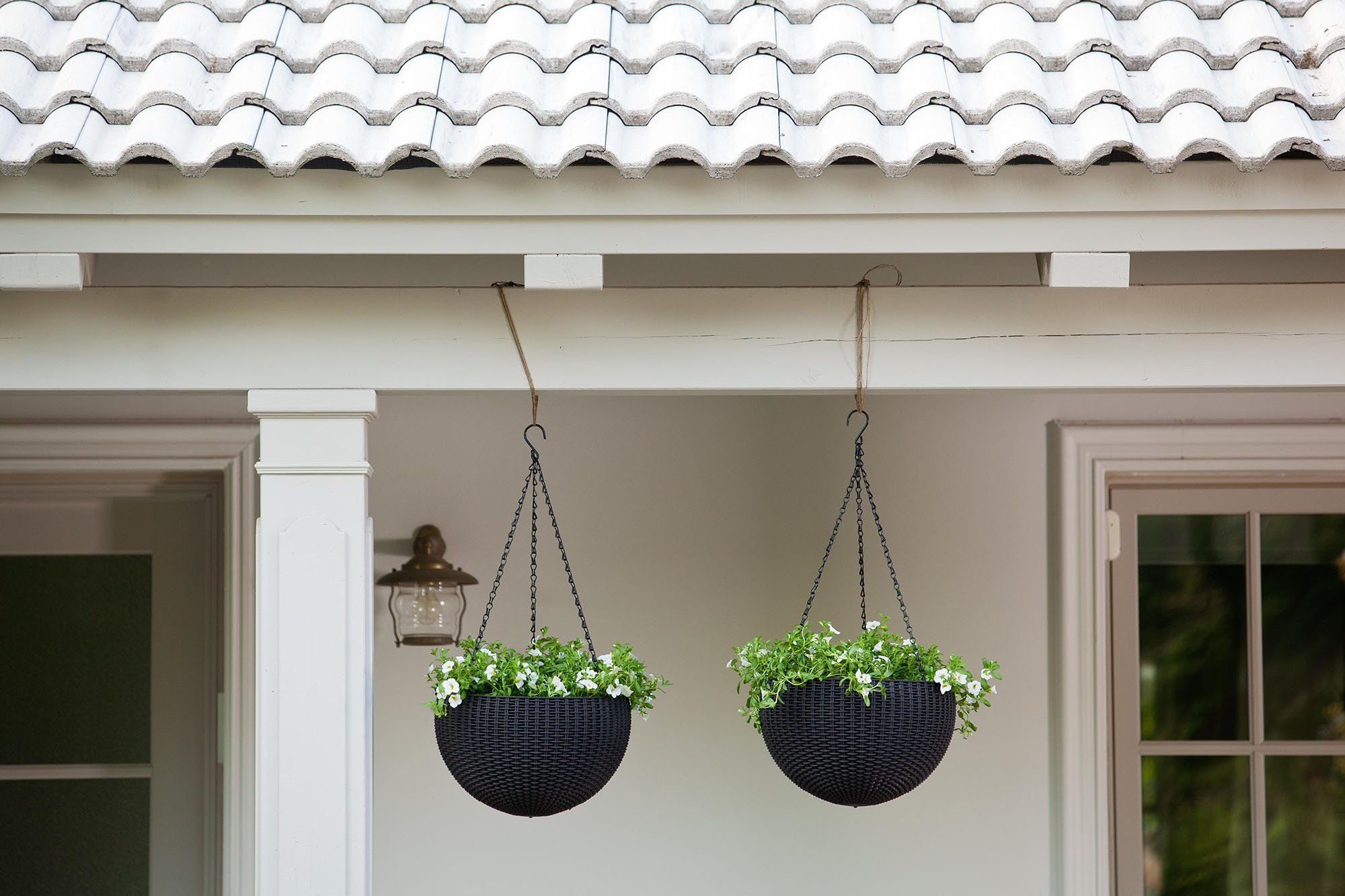
Selecting an appropriate container significantly impacts your strawberry hanging basket success. Several factors determine whether a basket will support healthy plant growth and abundant fruit production.
Size and Depth Requirements
Hanging baskets for strawberries should measure 10-16 inches in diameter and hold at least 4-8 quarts of potting mix. Strawberry roots typically extend 6 inches deep, so adequate soil depth ensures proper root development and moisture retention. Larger baskets support more plants and buffer against rapid drying. A 14-inch basket comfortably accommodates 3-4 strawberry plants with sufficient growing medium for sustained production.
Material Considerations
- Wire baskets with coconut fiber or moss liners create attractive displays while providing excellent drainage. The natural materials allow air exchange at the root level, promoting healthy development. However, these permeable liners dry faster than solid containers, requiring more frequent watering.
- Plastic hanging baskets retain moisture longer and weigh less when planted. Ensure plastic containers feature multiple drainage holes to prevent waterlogging. Self-watering designs reduce irrigation frequency, particularly beneficial for gardeners with busy schedules.
Weight and Structural Support
Remember that saturated baskets can weigh 10+ pounds. Install heavy-duty hooks rated for ceiling or wall mounting with adequate weight capacity. Quality hardware prevents accidents and protects your investment in plants and containers. Consider basket positioning carefully—placement should allow comfortable access for maintenance while avoiding walkway obstructions. Adjustable hanging chains let you modify height as plants mature.
Preparing the Perfect Potting Mix
Strawberries in containers require a specialized growing medium that balances moisture retention with excellent drainage. Standard garden soil proves unsuitable for basket cultivation, so creating or purchasing an appropriate potting mix ensures healthy root systems.
Essential Components
Quality potting mix for strawberries typically contains:
- Peat moss or coconut coir (40-50%): Provides acidity and moisture retention
- Perlite or vermiculite (20-30%): Ensures drainage and aeration
- Compost (20-30%): Supplies nutrients and beneficial microorganisms
- Sand (optional, 5-10%): Further improves drainage
This blend creates the slightly acidic conditions (pH 5.5-6.5) that strawberries prefer while preventing compaction and waterlogging.
Commercial Alternatives
Pre-mixed container soils specifically formulated for vegetables and fruits work excellently for hanging strawberry plants. Products containing mycorrhizal fungi enhance nutrient absorption, while slow-release fertilizers provide sustained nutrition. Avoid using garden soil in hanging baskets. Native soil compacts in containers, restricts root growth, and often harbors pathogens that thrive in confined spaces.
Soil Amendment and Preparation
Before planting, moisten the potting mix thoroughly until water runs freely from the drainage holes. This initial hydration ensures even moisture distribution and eliminates dry pockets that repel water. Consider mixing water-retaining polymers into potting soil for hanging baskets. These crystals absorb hundreds of times their weight in water, releasing moisture gradually as the soil dries. This amendment significantly reduces watering frequency while maintaining consistent moisture levels.
Planting Strawberries in Hanging Baskets
Proper planting technique establishes the foundation for productive strawberry hanging baskets. Following best practices during installation promotes rapid establishment and vigorous growth.
Timing Your Planting
Plant container strawberries in early to mid-spring after the danger of severe frost passes. Strawberries tolerate cool temperatures, so don’t wait until summer heat arrives. Early planting allows plants to establish before the fruiting season begins. In mild climates, autumn planting works well for certain varieties. Fall-planted strawberries develop robust root systems over winter, producing larger crops the following season.
Planting Process
- Line the basket: Install a coconut fiber or moss liner, ensuring complete coverage with no gaps where soil might escape.
- Add drainage layer: Place 1-2 inches of gravel or broken pottery shards at the basket bottom to prevent soil from blocking drainage holes.
- Fill with potting mix: Add moistened growing medium to approximately 2 inches below the basket rim.
- Space plants properly: For 12-14-inch baskets, plant 3-4 strawberry plants evenly around the perimeter. Avoid overcrowding, which restricts airflow and increases disease risk.
- Set crown depth correctly: Position plants so crowns sit at soil surface level—not buried, not exposed. Improper crown depth causes rot or desiccation.
- Firm soil gently: Press growing medium around roots to eliminate air pockets while avoiding excessive compaction.
- Water thoroughly: Irrigate until water drains freely, settling soil and hydrating roots.
Initial Care
After planting, position baskets in partial shade for 3-5 days, allowing plants to recover from transplant stress before moving to full sun. This transitional period reduces wilting and promotes successful establishment.
Optimal Growing Conditions
Creating ideal environmental conditions maximizes productivity when growing strawberries in hanging baskets. Light, temperature, and location requirements help you position plants for success.
Sunlight Requirements
Strawberry plants demand 6-8 hours of direct sunlight daily for optimal fruit production. Full sun exposure enhances berry sweetness, increases yields, and promotes compact growth habits. Insufficient light produces leggy plants with sparse, inferior fruit.
Position hanging baskets where morning and midday sun predominate. Afternoon shade in extremely hot climates prevents heat stress while maintaining adequate light levels. South-facing locations typically provide ideal exposure in northern hemisphere gardens.
Temperature Considerations
Container strawberries thrive in temperatures between 60-80°F (15-26°C). They tolerate cooler conditions down to 23°F (-5°C) but suffer in extreme heat exceeding 85°F (29°C). The portability of hanging strawberry baskets allows you to protect plants during temperature extremes. Move baskets to sheltered locations during unseasonable cold snaps or intense heat waves. This flexibility represents a significant advantage over ground-planted strawberries.
Wind Protection
While good air circulation benefits strawberry health, excessive wind desiccates foliage and damages blossoms. Position hanging baskets in areas protected from strong gusts—near building walls, under eaves, or behind windbreaks. Strong winds also dry potting mix rapidly, increasing irrigation demands. Sheltered locations reduce water stress while maintaining the air movement necessary for disease prevention.
Watering Hanging Basket Strawberries
Proper irrigation proves critical for growing strawberries in hanging baskets. Container-grown plants depend entirely on gardener-provided moisture, making a watering strategy essential for success.
Water Needs
Hanging strawberries require consistent moisture throughout the growing season. Unlike ground-planted strawberries that access deeper soil reserves, container plants dry quickly, especially during hot weather. Insufficient water causes stress, reduces yields, and produces small, seedy berries.
Generally, hanging basket strawberries need 1-2 inches of water weekly, equivalent to thoroughly saturating the growing medium 2-3 times weekly during active growth and fruiting. Frequency increases during hot, windy conditions when evaporation accelerates.
Watering Techniques
Check soil moisture daily by inserting your finger 1-2 inches into the potting mix. Water when the top inch feels dry, but before plants show stress symptoms like wilting or drooping leaves. Apply water slowly until it drains freely from the basket bottom. This thorough approach ensures complete root zone hydration rather than merely wetting the surface. Avoid light, frequent sprinklings that encourage shallow root development. Water around the basket perimeter rather than directly onto plant crowns. This technique reduces foliage wetness and minimizes disease risks while maintaining good aeration in the crown area.
Irrigation Systems
For multiple hanging strawberry baskets, drip irrigation systems dramatically reduce maintenance demands. Automated watering delivers consistent moisture while conserving water and ensuring plants never experience drought stress. Self-watering hanging baskets feature built-in reservoirs that supply moisture as needed. These containers reduce watering frequency to once or twice weekly while maintaining optimal moisture levels.
Common Watering Mistakes
Overwatering proves as harmful as underwatering for container strawberries. Constantly saturated soil causes root rot and creates conditions favoring fungal diseases. Always allow the soil surface to dry slightly between irrigations. Never let hanging baskets sit in standing water. Ensure saucers or drip trays drain promptly after watering to prevent waterlogged conditions.
Fertilizing for Maximum Production
Strawberries in hanging baskets require regular fertilization since containers provide limited nutrient reserves. Strategic feeding programs support vigorous growth and abundant fruit production.
Nutrient Requirements
Strawberries need balanced nutrition with slightly higher potassium levels to support fruit development. Look for fertilizers formulated for vegetables and fruits with N-P-K ratios like 10-10-10 or 5-10-10. Container plants typically need more frequent feeding than ground-grown counterparts since irrigation leaches nutrients from the potting mix. Plan to fertilize hanging strawberries every 2-3 weeks throughout the growing season.
Fertilizer Types
- Liquid fertilizers provide quick nutrient availability, making them ideal for container culture. Water-soluble formulations applied at half-strength every two weeks prevent salt accumulation while maintaining steady nutrition.
- Slow-release granular fertilizers incorporated into potting mix at planting time provide sustained nutrition for 3-4 months. This approach reduces maintenance requirements while ensuring consistent nutrient availability.
Organic options like fish emulsion, seaweed extract, and compost tea supply nutrients while promoting beneficial soil biology. Alternate organic and synthetic fertilizers for optimal results.
Feeding Schedule
Begin fertilizing hanging basket strawberries when active growth resumes in spring. Apply fertilizer every 2-3 weeks throughout the blooming and fruiting period. Reduce or eliminate feeding as day length shortens in autumn. Excess late-season nitrogen produces soft growth susceptible to cold damage. Always water thoroughly before applying fertilizer to prevent root burn. Never fertilize drought-stressed plants.
Pruning and Maintenance
Regular maintenance keeps strawberry hanging baskets productive and attractive. Simple pruning practices direct plant energy toward fruit production rather than vegetative growth.
Runner Management
Most strawberry varieties produce runners (stolons)—horizontal stems that develop plantlets at their tips. In ground plantings, runners create daughter plants that expand the strawberry patch. However, runners in hanging baskets drain energy from fruit production without serving useful purposes.
Remove runners as they appear by cutting them close to the mother plant. This simple practice redirects resources toward berry development, significantly increasing yields. Check plants weekly during active growth and clip emerging runners promptly.
Flower Removal in First Season
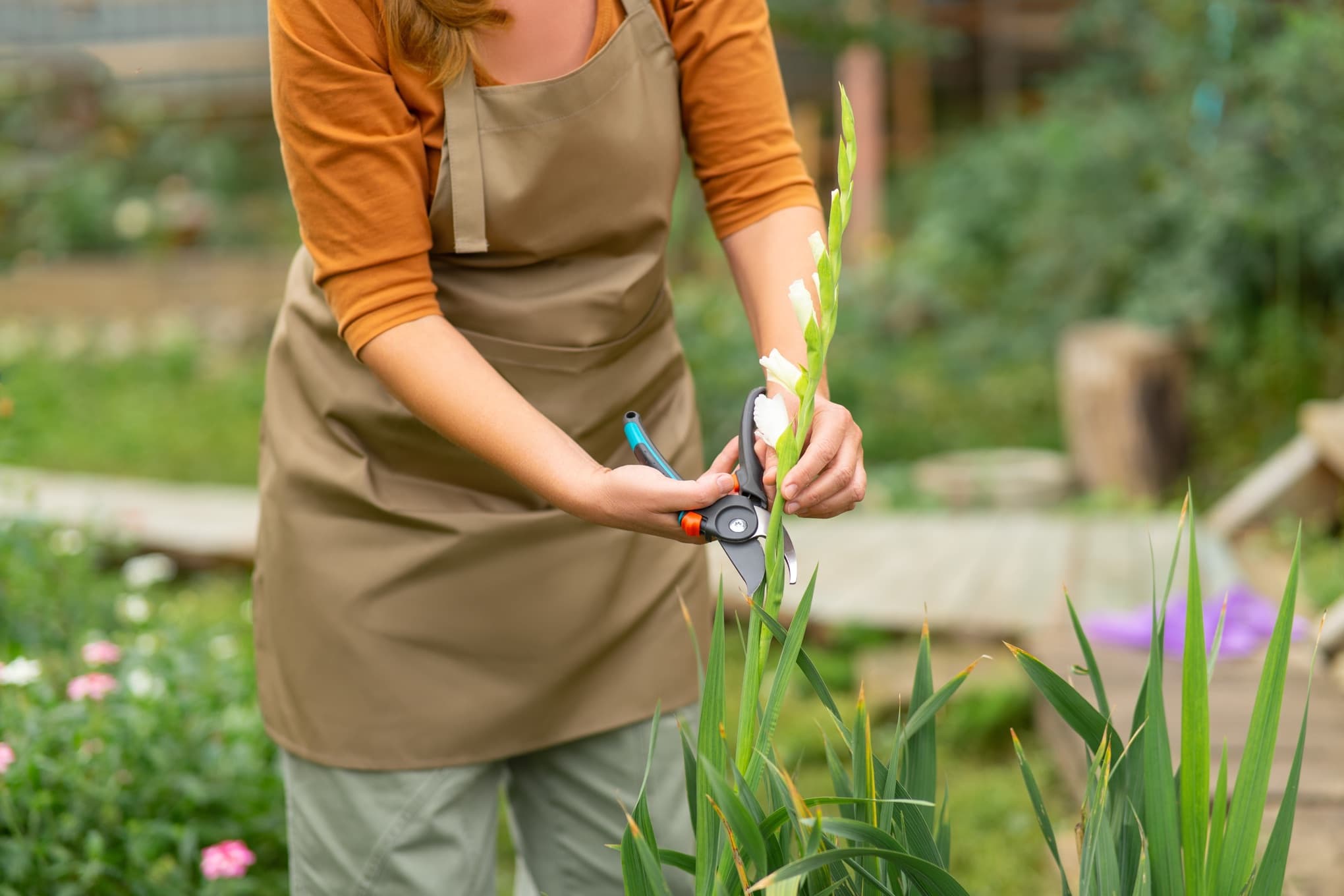
For hanging strawberries planted in early spring, consider removing all flowers during the first 4-6 weeks. This counterintuitive practice allows plants to establish robust root systems before fruiting begins. While sacrificing early berries seems difficult, the investment pays dividends in larger, more sustained harvests later in the season. Established plants produce superior crops compared to those stressed by premature fruiting.
Leaf Maintenance
Remove yellowed, damaged, or diseased foliage regularly to maintain plant health and appearance. Clean scissors or pruners between plants to prevent disease transmission. Periodic leaf removal also improves air circulation, reducing fungal disease risks. However, avoid excessive defoliation, which reduces the plant’s photosynthetic capacity.
Deadheading Flowers
After berries ripen and are harvested, remove spent flower stems to encourage additional blooming. This practice proves particularly important for everbearing and day-neutral varieties that produce multiple crops throughout the season.
Pest and Disease Management
While growing strawberries in hanging baskets naturally reduces pest and disease pressure, problems occasionally occur. Recognizing common issues and implementing preventive strategies protects your crop.
Common Pests
- Spider mites sometimes infest container strawberries, especially during hot, dry conditions. These tiny arachnids cause stippled, yellowing foliage. Combat infestations with strong water sprays or insecticidal soap applications.
- Aphids occasionally cluster on new growth and flower stems. These soft-bodied insects suck plant sap, causing distorted growth. Remove manually or treat with neem oil solutions.
- Birds find dangling berries irresistible. Protect ripening fruit with bird netting draped over baskets, or grow yellow or white fruited varieties that birds find less attractive.
Disease Prevention
- Powdery mildew appears as a white, dusty coating on leaves. This fungal disease thrives in humid conditions with poor air circulation. Prevent outbreaks by ensuring adequate spacing between plants, avoiding overhead watering, and providing good airflow around baskets.
- Botrytis fruit rot (gray mold) affects berries during cool, wet weather. Remove infected fruit immediately and improve air circulation. Water in the morning hours so foliage dries before evening.
- Root rot results from overwatering and poor drainage. Ensure containers drain freely and allow soil to dry slightly between irrigations. Discard severely affected plants to prevent disease spread.
Integrated Pest Management
Monitor hanging strawberry plants regularly for pest and disease symptoms. Early detection allows intervention before problems escalate. Remove affected plant parts promptly and maintain good sanitation practices. Encourage beneficial insects like ladybugs and lacewings that prey on common strawberry pests. Avoid broad-spectrum insecticides that eliminate beneficial species along with pests.
Pollination in Hanging Baskets
Successful pollination ensures fully formed, well-developed berries. Pollination requirements for hanging strawberries help maximize fruit quality and yields.
Natural Pollination
Strawberry flowers are “perfect,” containing both male and female parts. While self-pollination occurs, cross-pollination by insects produces the most uniform, fully developed berries. Position hanging baskets where pollinating insects can easily access flowers. Bees, particularly bumblebees, serve as primary strawberry pollinators. Avoid insecticide applications during bloom periods to protect these beneficial visitors.
Hand Pollination
In locations with limited pollinator activity—enclosed patios, high-rise balconies, or during poor weather when insects aren’t flying—hand pollination ensures fruit set. Use a small, soft artist’s brush to gently transfer pollen between flowers. Stroke the brush across flower centers in circular motions, moving from bloom to bloom. Perform this task on dry, sunny days when pollen is most viable. Alternatively, create air movement around flowering plants using a small fan. This simple technique mimics wind pollination and often proves sufficient for fruit set in protected locations.
Maximizing Fruit Quality
Well-pollinated berries develop evenly without white tips or deformed shapes. Incomplete pollination produces misshapen fruit with hard, seedy areas. Ensuring thorough pollination through natural or manual means dramatically improves berry appearance and eating quality.
Harvesting Your Hanging Strawberries
Proper harvesting techniques maximize flavor while extending production periods. Ripeness indicators and harvest methods ensure you enjoy hanging basket strawberries at peak quality.
Determining Ripeness
Strawberries reach optimal maturity when uniformly colored—red varieties should show no white or green areas. Berries continue developing sweetness after color change, so allow 1-2 additional days after full coloring for maximum flavor. Ripe berries release easily from plants with gentle twisting. Fruit requiring forceful pulling needs more time to mature. Harvest during cool morning hours when berries are firm and sugar content peaks.
Harvesting Technique
Grasp berries gently by their caps and twist slightly while pulling away from the plant. This method prevents bruising and leaves the cap attached, which extends storage life. For hanging strawberries, work systematically around baskets rather than randomly picking scattered berries. Complete circuits every 2-3 days during peak production, as new fruit ripens continuously. Remove overripe, damaged, or diseased berries during each harvest. Eliminating these fruits prevents disease spread and directs plant energy toward developing healthy berries.
Post-Harvest Handling
Handle container strawberries minimally after picking. These delicate fruits bruise easily and deteriorate rapidly when damaged. Place harvested berries in shallow containers, avoiding stacking that causes crushing. Store unwashed strawberries in the refrigerator, consuming within 3-5 days for best quality. Wash just before eating to prevent premature spoilage. Excess production freezes well—hull berries, arrange on trays for initial freezing, then transfer to bags for long-term storage.
Continuous Harvest
Day-neutral and everbearing varieties in hanging baskets produce fruit over extended periods. Regular harvesting encourages continued flowering and fruit set. Plants producing mature berries slow new flower production, so frequent picking maintains the production cycle.
Overwintering Hanging Basket Strawberries
Extending the rawberry hanging basket lifespan beyond a single season requires special winter care. While more challenging than annual cultivation, overwintering allows perennial strawberry varieties to produce larger second-year crops.
Cold Tolerance Considerations
Strawberry crowns survive freezing temperatures, but roots in containers are more vulnerable than ground-planted counterparts. Exposed baskets experience greater temperature fluctuations than insulated garden soil. Most strawberry varieties require 200-300 hours of temperatures between 32-45°F (0-7°C) for proper fruit bud development. However, sustained freezing below 20°F (-7°C) damages container roots.
Overwintering Methods
Option 1: Indoor Storage – Before the first hard frost, move hanging baskets to unheated garages, sheds, or basements where temperatures remain between 30-45°F. Water sparingly—just enough to prevent complete soil desiccation. Plants enter dormancy and require minimal maintenance until spring.
Option 2: Buried Containers – Remove baskets from hangers and sink them into garden soil up to their rims. Mulch heavily with straw or leaves for insulation. This method provides ground-level temperature protection while maintaining drainage.
Option 3: Insulation Wrap – For regions with mild winters, wrap suspended baskets in bubble wrap or frost blankets. Insulation moderates temperature swings while allowing baskets to remain hung. Unwrap periodically to check moisture levels.
Spring Reactivation
As temperatures warm in spring, gradually transition overwintered strawberries to outdoor conditions. Trim dead foliage, top-dress with fresh potting mix, and resume regular watering and fertilization. Second-year plants typically produce larger crops than first-year plantings.
Troubleshooting Common Problems
Even experienced gardeners encounter challenges when growing strawberries in hanging baskets. Recognizing common issues and implementing solutions maintains productive, healthy plants.
Poor Fruit Production
- Insufficient sunlight is the most common cause of poor fruiting. Ensure baskets receive 6-8 hours of direct sun daily. Relocate containers if necessary.
- Over-fertilization, particularly with high-nitrogen products, produces lush foliage at fruit expense. Switch to balanced or potassium-rich fertilizers and reduce application frequency.
- Inadequate pollination in protected locations results in misshapen berries or poor fruit set. Hand-pollinate flowers or relocate baskets where pollinators can access blooms easily.
Small or Tasteless Berries
- Water stress produces small, seedy, flavorless berries. Maintain consistent soil moisture throughout fruit development. Install drip irrigation for reliable watering.
- Nutrient deficiency, especially potassium, affects fruit quality. Apply fertilizer formulated for fruiting plants every 2-3 weeks during production.
- Premature harvesting before berries fully ripen reduces sweetness. Allow 1-2 days after complete color development before picking.
Wilting Plants
- Underwatering causes temporary wilting that reverses with irrigation. Check soil moisture daily during hot weather.
- Root rot from overwatering produces persistent wilting despite wet soil. Reduce watering frequency and ensure containers drain completely. Severely affected plants may require replacement.
- Root-bound containers restrict water uptake. If roots circle densely at basket edges, transplant into larger containers or divide crowded plants.
Yellow Leaves
- Natural aging produces yellowing on older, lower leaves. Remove these periodically.
- Iron deficiency causes yellowing between leaf veins while veins remain green. Treat with chelated iron supplements and ensure proper soil pH (5.5-6.5).
- Nitrogen deficiency produces overall pale green to yellow foliage. Increase fertilizer frequency or concentration.
More Read: How To Grow Strawberries in Containers
Conclusion
Growing strawberries in hanging baskets transforms limited spaces into productive fruit gardens while offering practical advantages over traditional cultivation methods. By selecting appropriate day-neutral or everbearing varieties, preparing quality potting mix, and providing consistent care, including adequate sunlight, regular watering, and timely fertilization, you can achieve abundant harvests from suspended containers. The vertical growing approach naturally protects plants from soil-borne diseases and ground-dwelling pests while creating stunning visual displays with cascading foliage and dangling fruit.
Whether you’re gardening on a small balcony, maximizing patio space, or simply seeking an ergonomic alternative to ground planting, hanging basket strawberries deliver fresh, flavorful berries throughout the growing season with minimal square footage requirements. Start your vertical strawberry garden today and discover how these space-efficient, attractive containers can provide continuous harvests of homegrown fruit while beautifying your outdoor living areas with productive edible landscaping.
